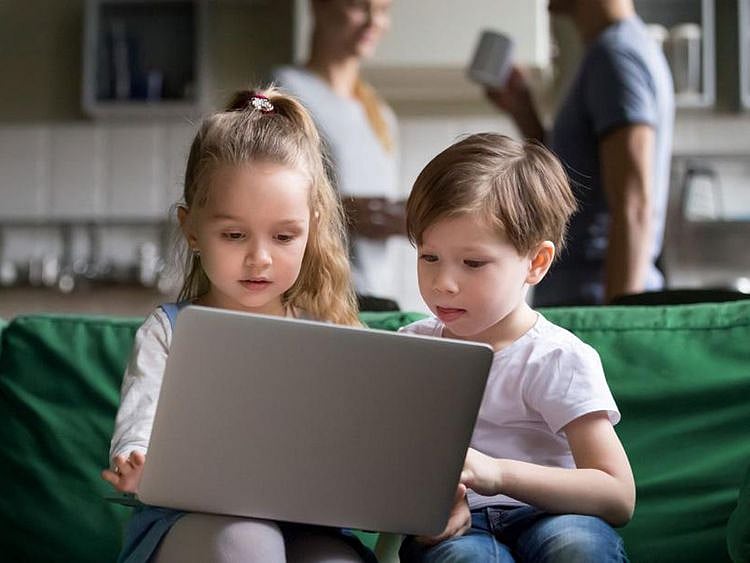What if screen time could spark your child’s imagination? With the right tools, it can—here’s how to make it happen
With a little restraint and intention, screen time doesn’t have to be the enemy

You’ve heard it all before: too much screen time is harmful for children. And yes, the risks are real—both physical and psychological.
But here’s the twist: With a little restraint, creativity, and intention, screen time doesn’t have to be the enemy. In fact, it can become a launchpad for imagination instead of a trapdoor.
Here’s how parents can make screen time work for their child’s creativity instead of working against it.
Choose the apps that let children build, and not just watch
Dubai-based Charlotte Wallace, a corporate professional and a concerned mum, didn’t want her five-year-old son to just sit and play games, to the point that it strained his eyes. “That age is so crucial for their mental and intellectual development. When they’re just passively scrolling, watching television that doesn’t give them space to engage, their own creativity is stifled. So, I started looking for apps and ways to make him engage and talk about it,” she says.
You need to look for apps that let them build, not just watch. Here are a few games that you can try, suggests Wallace.
Toca Life World: Where children can build entire worlds and invent characters.
Minecraft: Look for games that allow you to just build, like Minecraft.
Draw It or Procreate: If you see an inkling of interest for art, let them illustrate their ideas.
Tip: Join in! Ask questions like, ‘Why did you build that house that way?’ or ‘What’s your character’s story?’
Turn shows into story-starters
Once screen time is over, don’t just hit ‘Next Episode’. Turn the show into a story starter.
Dubai-based child therapist Nathalia King suggests using their favorite cartoons or movies as launchpads for imagination.
Try asking:
What do you think will happen in the next episode?
Can you draw a new character for the show?
If you were in that story, what would you do differently?
Turning passive watching into active imagining helps children reflect, invent, and create beyond the screen. So, next time your child watches Peppa Pig, ask them to talk about the episode, and to imagine a different ending. King adds, “It’s what I did with my child. As a result, he told me about a story about how Peppa Pig flew to space and ate burritos.”
Turn clicks into crafts
Supervised browsing on platforms like YouTube Kids or Pinterest can inspire real-world creativity. From building cardboard cities to crafting costumes, children can turn their screen-inspired ideas into hands-on adventures, adds King.
King explains: When you watch a ‘make a slime video’, gather ingredients and do it together. “You can even discover a paper crafts channel, and set up a mini-art station at home,” she says.
Let them tell the story
Look for tools that allow children to make their own stories, from animated videos, music tracks or even mini podcasts, explains King.
Try:
Toontastic 3D: Children can draw characters and record voices for a short movie.
GarageBand (for older children): Turn storytelling into music.
PuppetMaster: Bring drawings to life with animation.
Look for platforms that don’t just entertain, they teach children how to express themselves, build narratives, and think like creators.
Set the scene: Screen-time with a purpose
You need to structure and plan it as well, rather than leaving screen-time open ended. Frame it as a creative mission, explains King.
Here’s what you can try saying:
Let’s find a video to teach us how to draw our dream bedroom.
Today, use the tablet to make a pretend cooking show!
Can you design a spaceship and tell me who lives in it?
When children know they’re using screen time to make something, they shift from consumers to creators, she explains.
Balance with imagination off-screen
Furthermore, don’t let the fun stop with screen-time. A show about dinosaurs? Time to build a dino world out of pillows. A video game about farms? Let’s draw and label our own.
The screen is not the end goal, it’s the spark, explains King. What matters most is where your child’s mind runs once the device is off.
Don’t fear screen-time. You need to reshape it. When used intentionally, digital tools can nurture curiosity, inspire storytelling, and unlock new worlds of imagination. The question isn’t “How do I limit screen time?” It’s “How do I elevate it?”
And that shift changes everything.
Sign up for the Daily Briefing
Get the latest news and updates straight to your inbox
Network Links
GN StoreDownload our app
© Al Nisr Publishing LLC 2025. All rights reserved.